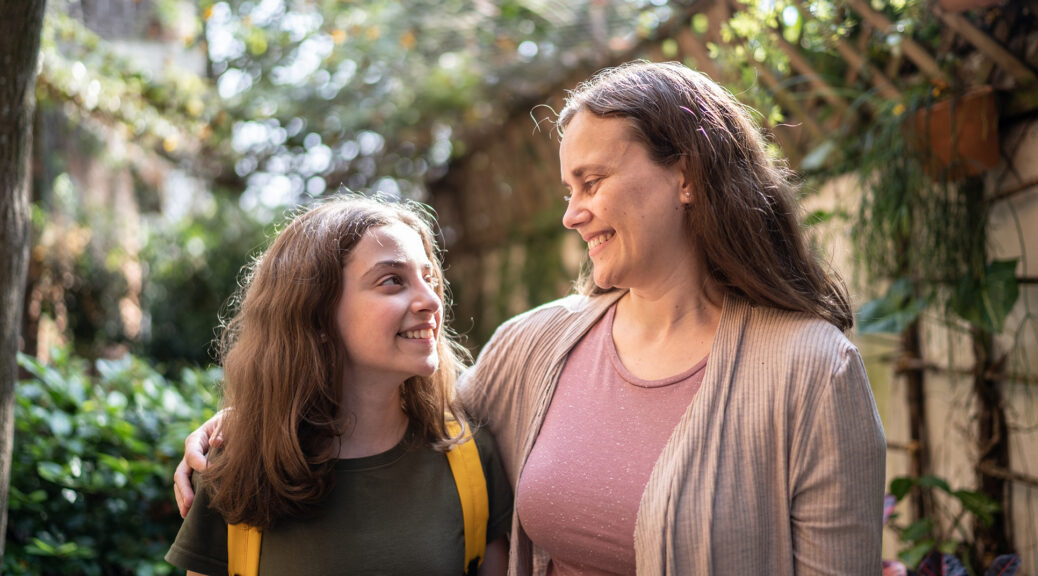Anxiety in Children and Teens: Signs, Symptoms and Treatment

Anxiety looks different for everyone – especially children and teens. It can show up as a “butterflies in the stomach” feeling a child feels about going back to school, nerves about an upcoming competition or stress over a difficult test. Anxiety typically stems from feelings of excitement, joy, fear or uncertainty.
But sometimes, those high-stress thoughts are no longer temporary, and become so overwhelming that life is difficult for your child or teen to manage.
How can you tell the difference between everyday nerves and an anxiety disorder? Let’s explore the signs and symptoms of anxiety in children and teens.
What is Anxiety?
Anxiety becomes an anxiety disorder when stressful thoughts and feelings become excessive and persistent. For a person with an anxiety disorder, the fear, worry, dread or unease get worse over time. The symptoms may grow severe enough that they interfere with the ability to successfully cope and function.
Types of Anxiety Disorders

Anxiety disorders aren’t only experienced by adults. In fact, anxiety among children and adolescents is on the rise, with 20.7% of youth worldwide experiencing an anxiety disorder (nearly double pre-COVID pandemic numbers).
Children and teens can experience a few different types of anxiety:
Generalized Anxiety Disorder (GAD): Uncontrolled worry and anxiety with no discernible root cause.
Panic Disorder: Manifests as frequent panic attacks where the youth may experience extreme fear and a sense of impending doom. Panic attacks may occur with other anxiety disorders, but a child with a panic disorder will experience these attacks without any discernible cause.
Phobias: While fears are common in children, phobias are fears that don’t decrease with reassurance and hinder the child or teen’s ability to cope and function. Phobias often revolve around animals, insects, heights, enclosed spaces, thunderstorms or going to the doctor.
Social Anxiety (or Social Phobia): The excessive fear of being rejected, humiliated or embarrassed in front of other people. An adolescent or teen with social anxiety will often avoid social situations like parties or school.
Separation Anxiety: Distress at the thought or reality of being separated from a parent or caregiver. This is a normal developmental experience for infants and toddlers but can become an anxiety disorder in older children if it affects their ability to cope and function.
Post-Traumatic Stress Disorder (PTSD): An anxiety disorder typically rooted in a traumatic event or series of events a child or teen witnesses or experiences.
Signs and Symptoms of Anxiety
 Children and teens may not recognize anxiety for what it is and can often have a difficult time articulating how they are feeling to a trusted adult. By being attuned to possible signs and symptoms of an anxiety disorder, you as a parent or caregiver can ensure a child gets the help they need.
Children and teens may not recognize anxiety for what it is and can often have a difficult time articulating how they are feeling to a trusted adult. By being attuned to possible signs and symptoms of an anxiety disorder, you as a parent or caregiver can ensure a child gets the help they need.
The following are possible symptoms of an anxiety disorder:
- Changes in eating habits (i.e., eating a lot more or a lot less than usual)
- Changes in sleeping habits (i.e., insomnia, frequent nightmares or oversleeping)
- Difficulty concentrating
- Complaints of stomach or body aches with no physical cause
- Acting out, throwing fits or having outbursts more than usual
- Restlessness or fidgeting
- Constant worry or negative thoughts
- Easily angered or irritated
- Crying a lot more than usual, with more difficulty being consoled
- Clingy behavior or constant desire to be held
- Decreased interest in activities, hobbies or friends who used to bring joy
 These symptoms can look different for children and teens depending on their age and their lived experiences. So it’s important to note how they differ from the youth’s normal behavior. You may not always notice these signs in the home, so it’s important to stay engaged in your child or teen’s school, extracurricular and online presence to notice possible symptoms manifesting there.
These symptoms can look different for children and teens depending on their age and their lived experiences. So it’s important to note how they differ from the youth’s normal behavior. You may not always notice these signs in the home, so it’s important to stay engaged in your child or teen’s school, extracurricular and online presence to notice possible symptoms manifesting there.
Sometimes, symptoms of anxiety can look like symptoms of another mental health issue, like depression. In fact, anxiety disorders often go hand-in-hand with depression. Because anxious feelings can be a sign of other concerns, it’s important to take these symptoms seriously and get your child or teen support.
How Parents and Caregivers Can Help Children and Teens Experiencing Anxiety
If you notice any of the above signs or symptoms in a child or teen in your life, there are things you can do to help them learn how to better manage their stress and feelings of anxiety. Here are some ways you can help them develop coping strategies, build resilience and improve their emotional regulation.
Practical Strategies & Activities
 Actively communicate: Be present and engaged in the youth’s life. Make communication and conversation part of the normal routine so that if a child or teen struggles with anxiety or another mental health disorder, they feel safe talking to you about it.
Actively communicate: Be present and engaged in the youth’s life. Make communication and conversation part of the normal routine so that if a child or teen struggles with anxiety or another mental health disorder, they feel safe talking to you about it.
Demonstrate coping strategies: Be an example to your child or teen of healthy coping strategies by practicing self-care, demonstrating the value of gratitude and being open about your own feelings. It’s also important to apologize and be open about moments when your own mental health triggers a negative response, like yelling at your child or teen.
Practice relaxation techniques: Help youth learn deep breathing exercises, grounding methods and mindfulness practices that can reduce symptoms of anxiety. Participating in these together can be helpful for everyone!
Encourage physical activity: Physical exercise has been proven to prevent the occurrence of mental health disorders in children and teens. It can also ease the symptoms of anxiety disorders. Encourage your child to engage in sports or other forms of physical activity. Suggest activities that you can do together such as a family hike/walk or going for a swim.
Building Long-Term Coping Skills
 Create a mental health coping toolkit: A mental health toolkit is a youth’s go-to resource of actionable steps that help reduce feelings of anxiety. The toolkit may include journaling guides, notecards listing what the child can do when experiencing specific emotions, a playlist of calming or empowering songs and favorite comfort items or activities like a beloved stuffed animal or a fun card game.
Create a mental health coping toolkit: A mental health toolkit is a youth’s go-to resource of actionable steps that help reduce feelings of anxiety. The toolkit may include journaling guides, notecards listing what the child can do when experiencing specific emotions, a playlist of calming or empowering songs and favorite comfort items or activities like a beloved stuffed animal or a fun card game.
Engage in positive self-talk: Teach your child to replace negative thoughts with positive, realistic ones, focusing on their strengths and past successes rather than on real or perceived failures.
Build positive social connections: Encourage your child or teen to spend time with peers by arranging playdates for younger children, and suggesting extracurricular activities (like clubs or a youth group at a place of worship) where youth can make friends. We all need connection, and these friendships can help with anxiety!
Ask for help: You don’t have to manage your child’s anxiety alone. There are resources and mental health professionals available to help your family cope with and improve their mental health!
How KVC West Virginia Can Help Children and Teens Address Anxiety
 KVC West Virginia provides outpatient mental health therapy services for children, families and adults insured by Medicaid. Our licensed mental health professionals can treat anxiety disorders, meeting with youth and families where they are.
KVC West Virginia provides outpatient mental health therapy services for children, families and adults insured by Medicaid. Our licensed mental health professionals can treat anxiety disorders, meeting with youth and families where they are.
Our team helps clients develop coping skills, improve emotional regulation and better understand and describe their feelings. These mental health therapy services are available via telehealth appointments, in our offices, in clients’ homes and even at some schools.
We can treat several anxiety disorders and mental health conditions. Those include:
- Anxiety
- Attention deficit hyperactivity disorder (ADHD)
- Bipolar disorder
- Depression
- Obsessive compulsive disorder (OCD)
- Oppositional defiant disorder (ODD)
- Post-traumatic stress disorder (PTSD)
To check for therapist availability and find the help your child or teens needs, contact your local KVC office.

